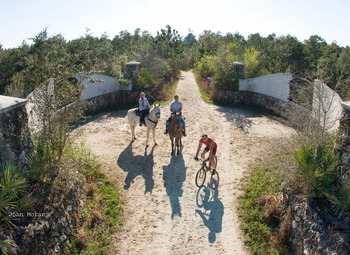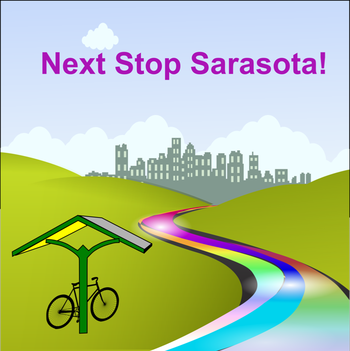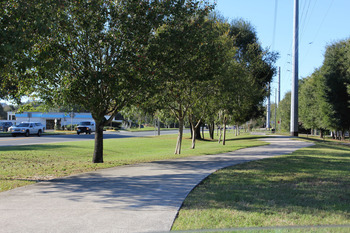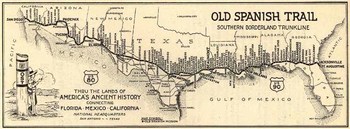Spring 2017

The kickoff for the 50th anniversary celebration of the National Trail System begins May 9 at the International Trails Symposium in Dayton, Ohio. Known as the Trails50 celebration, trail users are invited to share stories, photos, or favorite memories, and simply get out on a trail.
The focus will be on those trails covered under The National Trails System Act of 1968 and the National Historic Trails bill of 1978. These include National Scenic Trails, such as the 1,100-mile Florida National Scenic Trail, and National Recreation Trails, such as the recently designated Bartram Trail in Putnam County. Florida is home to 43 National Recreation Trails. These trails cover a broad range of non-motorized uses, from hiking to biking to equestrian.
You can join the conversation on Facebook, Twitter or on the Trails50 website. Be sure to share your favorite experiences and images on Florida's many national trails. And be sure to peruse the winners of the 2016 National Recreation Trail photo contest. Two Florida trails, the Wacissa River and Florida Circumnavigational Saltwater Paddling Trail, were featured among the winners.
 Graphic design by Freepik
The Sarasota County Commission took a big step in extending the 10.6-mile Legacy Trail in Southwest Florida by committing $8.6 million to buy the right-of-way for a 7.5-mile trail extension. The trail currently serves about 175,000 annual users and this extension could greatly boost those participation figures. This funding is considered to be a critical first step since other private and public funding must be obtained to complete the trail. The total estimated cost for land acquisition and construction of the extension is estimated to be between $56 and $60 million.

A half-acre parcel in downtown Keystone Heights along the Palatka-to-Lake Butler State Trail was recently purchased through the Office of Greenways and Trail acquisition program for $114,500. This parcel will be subleased to the city of Keystone Heights to develop and manage the property as a public trailhead with parking and restrooms. Currently, many trail users park at private businesses in downtown Keystone Heights in order to use the trail. The trailhead will also benefit users who want to ride the 6-mile paved trail from Keystone Heights to Mike Roess Goldhead Branch State Park.
"Keystone Heights is known for
its lakes and in the past several years since we have gotten the rail-trail,
we see more and more bikers and walkers using the trail," said Keystone Heights mayor Tony Brown. "The importance
of the Keystone Heights Trailhead will boost the economy in our city and
we will have a center point for bike events to be on the trail with its beautiful
scenery."
The town recently held its first annual Mayor's Ball, sponsored by the Rotary and Kiwanis clubs, and $3,000 was raised for the trailhead. The local Rotary Club is now applying for a matching grant.

If you've ever driven U.S. 90 just east of Milton in the Florida Panhandle, you may have noticed an old brick road paralleling the highway to the north. This is a five-mile remnant of the 2,743-mile Old Spanish Trail (OST) Auto Highway, built in the 1920s from St. Augustine to San Diego, California. This old brick road, known as the Milton Trail, is now a walking and bicycling path. Part of the focus of the Old Spanish Trail Centennial Association (OST100) is to not only revitalize and beautify the original OST roadbed, but also to inspire states and counties to build more biking and walking trails along the corridor or to use part of the original roadbed for that purpose, such as the Milton Trail.
As part of a decade long centennial celebration of the original highway's conception and completion, OST100 is hosting a centennial conference in Tallahassee May 18-20 that is open to the public. Activities will include lectures, a bike ride, historic walk and motorcade to Havana on the original route. The original route in Florida generally followed U.S. 90, but deviated in certain sections. In Jacksonville, the route veered south along U.S. 1 to St. Augustine.
Various sections of the original Old Spanish Trail were built of brick, crushed oyster shells, concrete, asphalt and wooden planks. In 2029, OST100 plans to organize a celebratory caravan to follow as much of the original route as possible. "We're hoping by 2029 that tourists will be driving, walking and biking the trail," said OST100 Chairperson Charlotte Kahl.
|